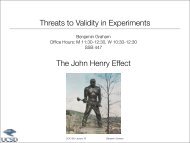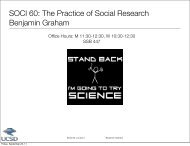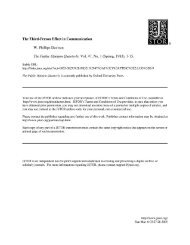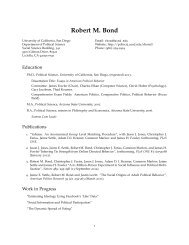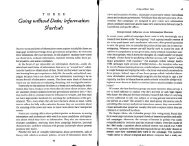Chapter 6 Why Authoritarian Parties? The Regime Party as an ...
Chapter 6 Why Authoritarian Parties? The Regime Party as an ...
Chapter 6 Why Authoritarian Parties? The Regime Party as an ...
Create successful ePaper yourself
Turn your PDF publications into a flip-book with our unique Google optimized e-Paper software.
elev<strong>an</strong>ce of the parameters b, w, <strong>an</strong>d c.<br />
CHAPTER 6<br />
This <strong>an</strong>alysis illuminates several org<strong>an</strong>izational dilemm<strong>as</strong> that we frequently observe in<br />
m<strong>an</strong>y single <strong>an</strong>d domin<strong>an</strong>t party regimes. <strong>The</strong> party service constraint implies that – in<br />
order to attract new members who provide politically valuable service – the regime must<br />
maintain a minimal rate of promotions <strong>an</strong>d, in turn, a positive rate of retirement. <strong>The</strong><br />
Chinese Communist <strong>Party</strong>, for inst<strong>an</strong>ce, h<strong>as</strong> strived to maintain <strong>an</strong> appropriate bal<strong>an</strong>ce<br />
between these two policies at various levels of the party hierarchy. In the 1980s, Deng<br />
Xiaoping initiated efforts at rejuvenating the party’s leadership by promoting age limits for<br />
Politburo members (M<strong>an</strong>ion 1992, 1993), <strong>an</strong>d in 2002, Ji<strong>an</strong>g Zemin instituted term limits<br />
<strong>an</strong>d rotation for leading local cadres in the party <strong>an</strong>d government (Bo 2007; Nath<strong>an</strong> 2003).<br />
Underst<strong>an</strong>dably, wemayexpectseniorr<strong>an</strong>kswithinthepartytoresistpoliticalretirement<br />
<strong>an</strong>d the implementation of <strong>an</strong> appropriate bal<strong>an</strong>ce in promotion <strong>an</strong>d retirement policies may<br />
present a political challenge for the party leadership. Consider Nikita Khrushchev’s proposal<br />
at the 22nd <strong>Party</strong> Congress in 1961 to revise CPSU’s statutes <strong>an</strong>d implement a “systematic<br />
renewal of cadres” that would consist of term limits for individuals in elected party posts <strong>an</strong>d<br />
rules forturnover inother party bodies(Burlatsky 1991, 129-30). Khrushchev’s putative mo-<br />
tives <strong>as</strong> well <strong>as</strong> the party membership’s negative reaction to this policy ch<strong>an</strong>ge accords with<br />
the implications of the present model. According to Thompson, for inst<strong>an</strong>ce, Khrushchev<br />
worried that “a gradual freezing of personnel policy would block up the system, <strong>an</strong>d stag-<br />
nation would occur” (Tompson 1995, 242-244). In terms of the present model, Khrushchev<br />
w<strong>as</strong> concerned about the incre<strong>as</strong>ing costs of the existing retirement policy (a too low r <strong>an</strong>d<br />
a too high b in the present model) <strong>an</strong>d the diminishing incentives to provide party service<br />
among the junior r<strong>an</strong>ks within the party. On the other h<strong>an</strong>d, the membership of the <strong>Party</strong><br />
21







